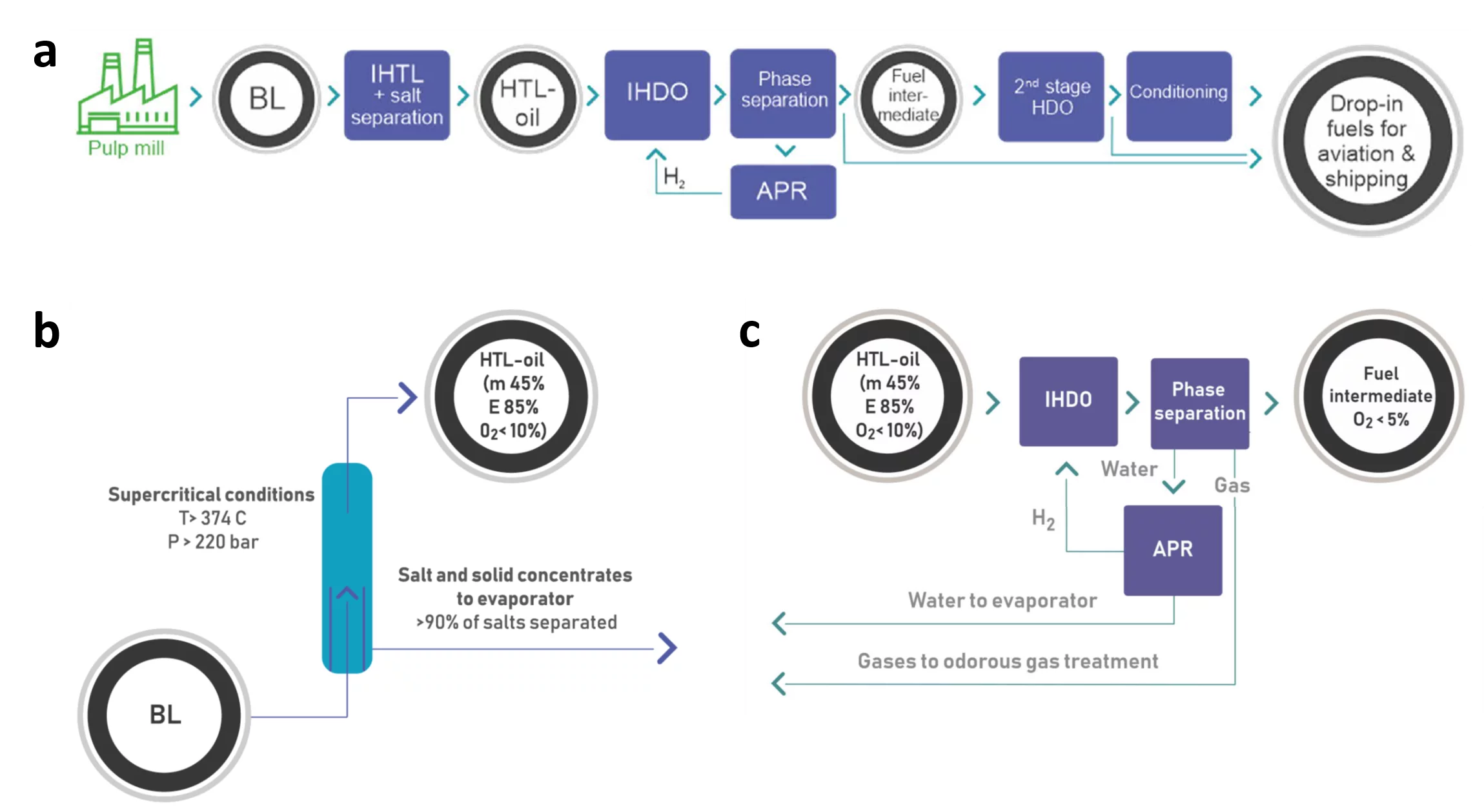Black Liquor to Fuel
Coworkers: Dr. Nicholas Islongo Canabarro, Dr. Alexey Kurlov, Dr. David Baudouin
The Black Liquor to Fuel (BL2F) project, an EU Horizon 2020 project, aims to develop a feasible, efficient and sustainable process for converting black liquor (a byproduct of pulp production) to drop-in biofuels for aviation and shipping. Black liquor is a complex mixture composed of various ingredients including lignin, hemicellulose, sodium hydroxide, sulfide, carbonate, and sulfate. It is regarded as a very attractive feedstock for biofuel production and has the potential for being the source of 11 billion liters of advanced biofuels by 2050 in Europe.
In the BL2F concept (Figure 1a), the innovative integrated hydrothermal liquefaction (IHTL) process will combine conversion process of the organic fraction and the removal of cooking salts into a single reactor operating above supercritical conditions (temperature > 374 °C, pressure > 220 °bar, Figure 1b). The IHTL process has an expected mass yield over 45 % and energy content of 85 % from black liquor to fuel intermediate.
Next, the oxygen and sulfur are removed in a two-stage HDO, i.e. the so-called Integrated HydroDeOxygenation (IHDO), performed directly at the IHTL reactor outlet under hydrothermal conditions prior to the separation of the aqueous phase, and 2nd stage HDO, performed at an oil refinery. The IHDO step is supposed to reduce the oxygen content and, thus, stabilize the oil intermediate prior to the transportation. The 2nd stage HDO at oil refinery will complete deoxygenation to the different desired level of aviation and maritime sector and produce sulfur-free refinery intermediates.
In this project, the CPE group is leading WP2 focusing on salt separation and IHTL. CPE is working on preventing fouling of HTL process by salts, on optimizing the semi-continuous extraction of salts from the main stream as well as optimizing the salt extraction together with HTL. We use for High-Pressure Differential Scanning Calorimetry (HP-DSC) and a continuous salt separator design in-house (Salsan II test rig).
The CPE group is also involved in WP3 focusing on the IHDO. Its role lies in assessing the stability and catalytic activity of the catalysts developed specifically for continuous IHDO in supercritical water conditions. For that, Konti-I continuous test rig (fixed bed reactor) is used, as well as batch reactor heated by a fluidized sand bed.
Project website: https://www.bl2f.eu/


